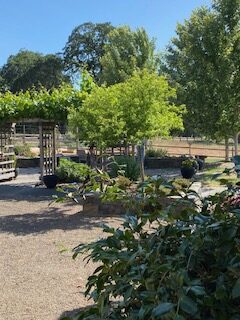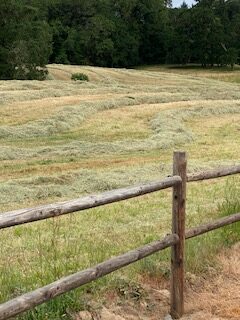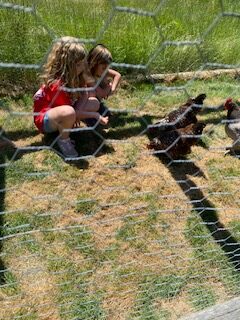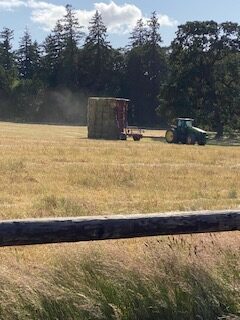
You can’t stay inside on a day like this! Highest pollen count in decades for Corvallis? Grass seed? Yes, but, my allergies?
I thought I’d left my hay fever behind when we moved from Minnesota and its ragweed. And then came the great wave of hazelnut (filbert, to some of you) planting in our valley. Corvallis, the Grass Seed capital of the world now has a second claim to allergy-generation fame.
But instead of sneezing and coughing, I get hives. Yes. Red, blotchy, itchy hives. I call my beloved Dr. Jen, and she suggests something called Zyrtec. Comes with all kinds of warnings, but hey. If it works? It doesn’t.
I see a product advertized. Allegra Hives. Yes! Specifically for hives. It doesn’t work. Not to feel too sorry for myself, but have you ever itched so fiercely that you can’t even try to sleep? All night? You can try Eucerin, but over your entire body? What would that do to the sheets?
I call Dr. Jen again and she recommends Xyzal. (A ridiculous name — how would you even pronounce it to the pharmacist when you call?) “24 HR ALLERGY” Take it, Dr. Jen says, with Pepcid AC. Today, I’m holding my breath because the hives, while still there, DON’T ITCH. I went outside in celebration, into the wind, the pollen be damned.
Okay, that behind us, let’s get on with the blog. Ryan, cow guy, has been busy. The west-most pasture had been planted in early spring to fescue, but to lie fallow this year. I like that word: fallow.
Then last week, came the thresher crawling over the field. I don’t have a photo of this stage, so use your imagination. Because next came the rake to gather the grass into windrows. Another word I like. Windrows. And this time, I have a photo:

And finally:

The bales will be stacked, then loaded onto a truck, and stored in one of Ryan’s barns. Next year, the plan is to plant sweet peas in this field, a legume meant to fix nitrogen, but which look and smell gorgeous as a bonus.
How are the bees doing? It’s a little hard to tell, but Allen came over to assist in settling the creatures into their new habitat. Here’s what that looked like:

We think they’re doing well. Apparently they have to be fed at first, before they set out to gather nectar and — pollen! For energy, the nectar, and for protein, the pollen. Who knew we’d have so much free protein for them?
Allen brought his family with him, and here are his two little girls making friends with the chickens:

It’s true that the chickens haven’t managed to enjoy the swing Larry made for them, but little girls know what to do with one:

We’re just back from a Nature Conservancy trip to visit Sycan Marsh, and learn about the fire management programs they’re implementing there. Their before and after photos are compelling, and the personnel are passionate and smart. The marsh is a mile-high meadow, and, speaking of words, I asked one of the staff the definition of another of my favorites, “fen.” What’s a fen?
Although both bogs and fens are similar types of wetlands as they are both considered peatlands, what sets them apart from each other is the source of their water supply. Fens typically are fed by a steady source of ground water whereas bogs are usually enclosed depressions filled by rain water.
Larry is standing at the sink, preparing to create one of his specialities for dinner, Szechuan Sweet and Sour spare ribs, when he says Hey! Look out the window!
Not sure why this photo came up super-sized, but it seems an appropriate ending to this afternoon’s blog. Wish you were coming for dinner — it’ll be delicious!


Next chicken names: Fen & Bog
Thank you very much for the information, it will help me improve the quality of my life. https://steemit.com/blog/@mixiti/how-to-win-spribe-aviator-casino-game